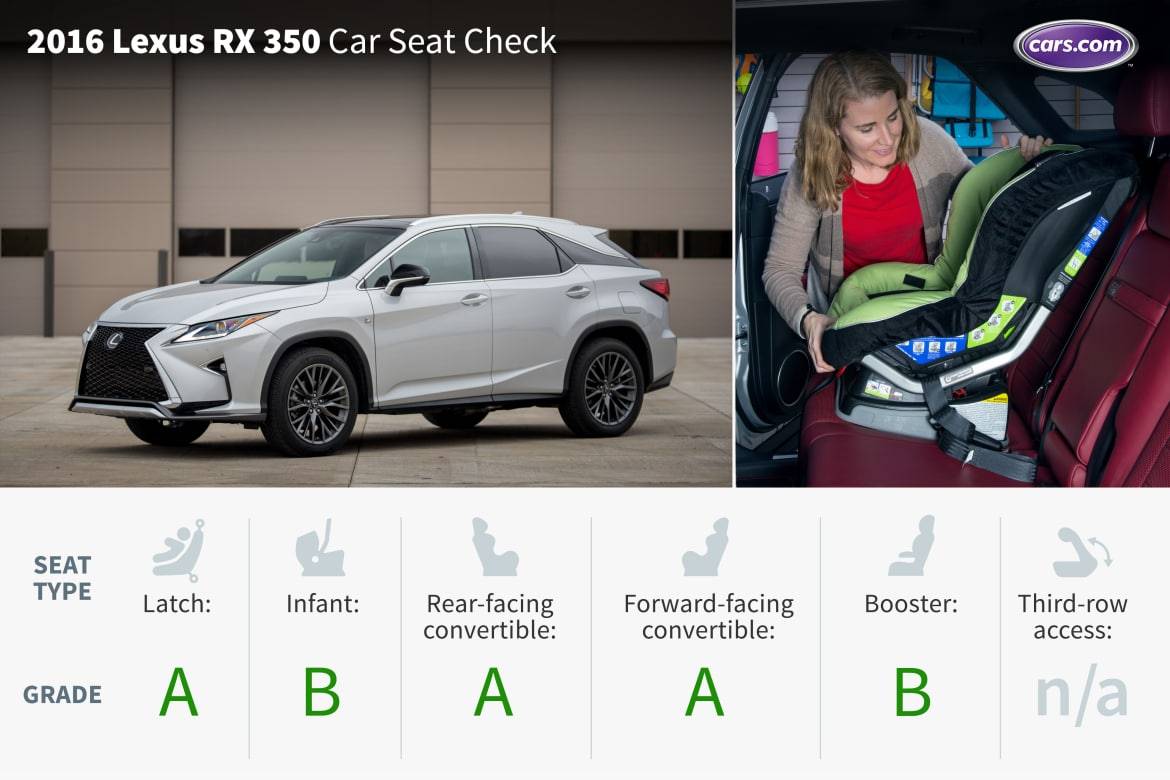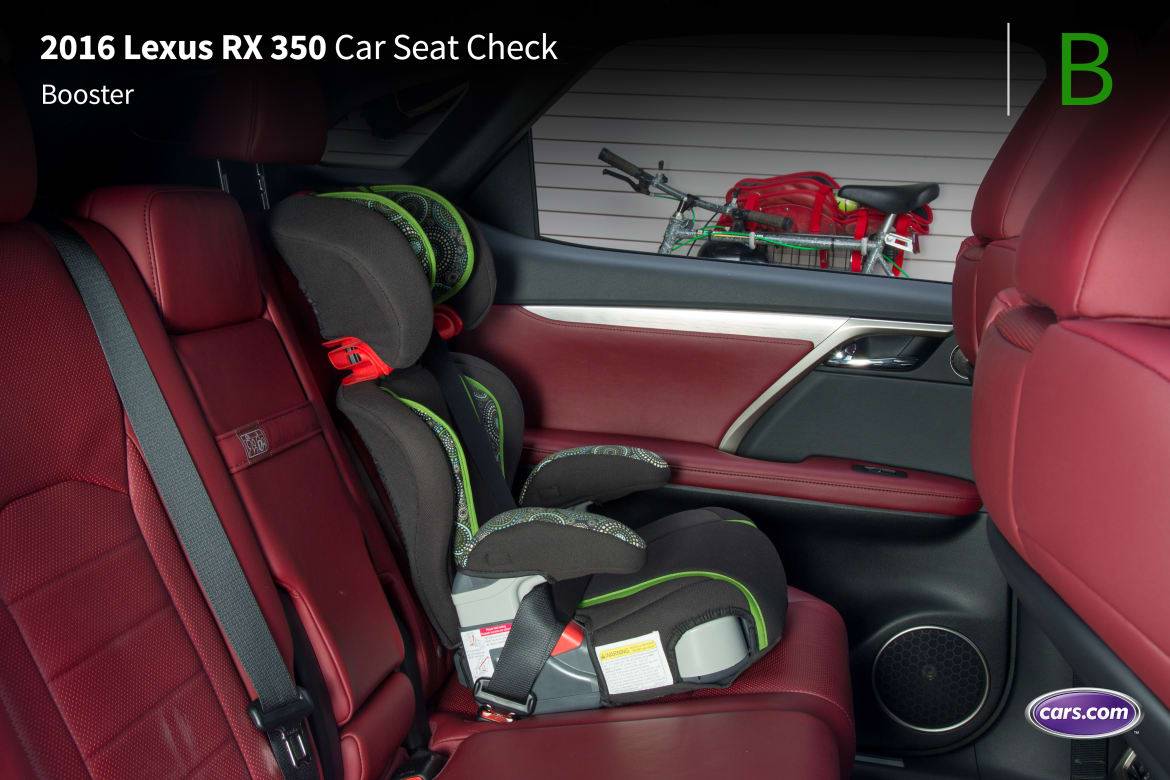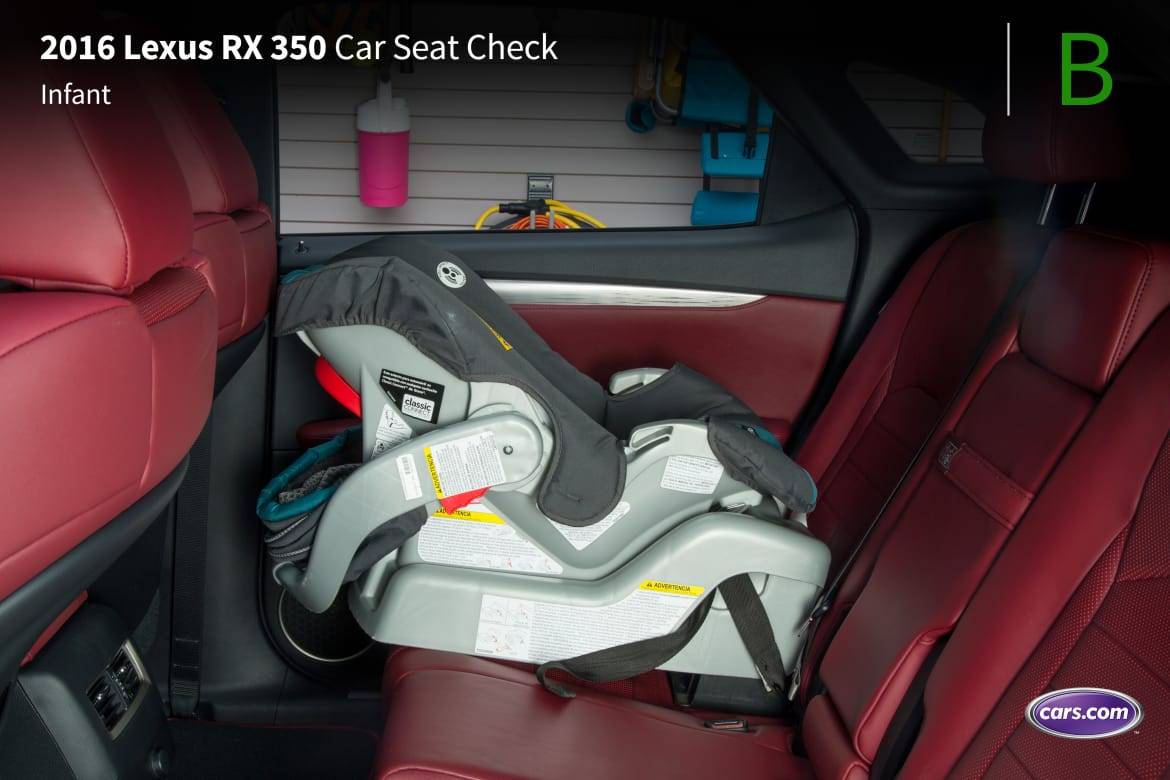2016 Lexus RX 350 F Sport: Car Seat Check


Lexus’ redesigned midsize SUV got a giant dose of in-your-face style from its enormous new grille, but what about the interior? For 2016, its largeness follows inside as well. The RX got bigger this year, which means more legroom, over an inch more actually. For child-safety seats, an inch is a lot of room. For this Car Seat Check, we tested an RX 350 F Sport and it excelled.
How many car seats fit in the second row? Two, but it nearly fit three. Other car seats might fare better.
What We Like
- The two sets of Latch anchors are exposed and simple to use.
- Three tether anchors are found midway down the seatback; they’re clearly labeled for easy location and connection.
- In both rear- and forward-facing modes, the convertible installed easily and fit well. We did not have to move the front passenger seat forward to make room for the convertible in rear-facing mode.
What We Don’t
- The rear-facing infant seat installed without a struggle, but we had to move the front passenger seat forward to fit it. Our 5-foot-8 tester had enough legroom, but taller passengers may need more to be comfortable.
- Although the booster fit well in the RX, the seat belt buckles are recessed into the cushion, making them tough for kids to find and grasp.












Grading Scale
A: Plenty of room for the car seat and the child; doesn’t impact driver or front-passenger legroom. Easy to find and connect to Latch and tether anchors. No fit issues involving head restraint or seat contouring. Easy access to the third row.
B: Plenty of room. One fit or connection issue. Some problems accessing third row when available.
C: Marginal room. Two fit or connection issues. Difficult to access third row when available.
D: Insufficient room. Two or more fit or connection issues.
F: Does not fit or is unsafe.
About Cars.com’s Car Seat Checks
Editors Jennifer Geiger and Jennifer Newman are certified child safety seat installation technicians.
For the Car Seat Check, we use a Graco SnugRide Classic Connect 30 infant-safety seat, a Britax Marathon convertible seat and Graco TurboBooster seat. The front seats are adjusted for a 6-foot driver and a 5-foot-6 passenger. The three child seats are installed in the second row. The booster seat sits behind the driver’s seat, and the infant and convertible seats are installed behind the front passenger seat.
We also install the forward-facing convertible in the second row’s middle seat with the booster and infant seat in the outboard seats to see if three car seats will fit; a child sitting in the booster seat must be able to reach the seat belt buckle. If there’s a third row, we install the booster seat and a forward-facing convertible. To learn more about how we conduct our Car Seat Checks, go here.
Parents should also remember that they can use the Latch system or a seat belt to install a car seat, and that Latch anchors have a weight limit of 65 pounds, including the weight of the child and the weight of the seat itself.

News Editor Jennifer Geiger joined the automotive industry in 2003, much to the delight of her Corvette-obsessed dad. Jennifer is an expert reviewer, certified car-seat technician and mom of three. She wears a lot of hats — many of them while driving a minivan.
Featured stories










